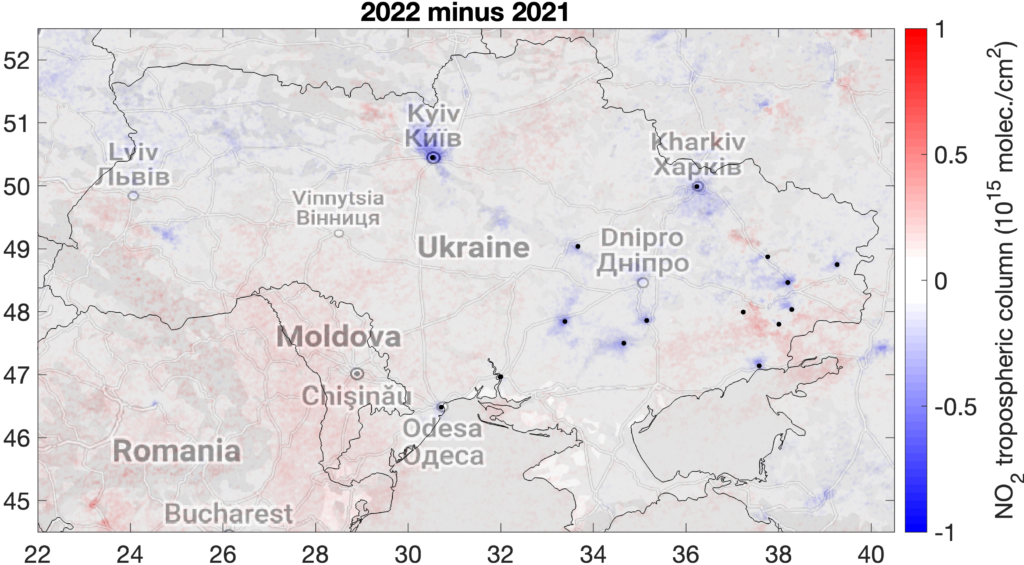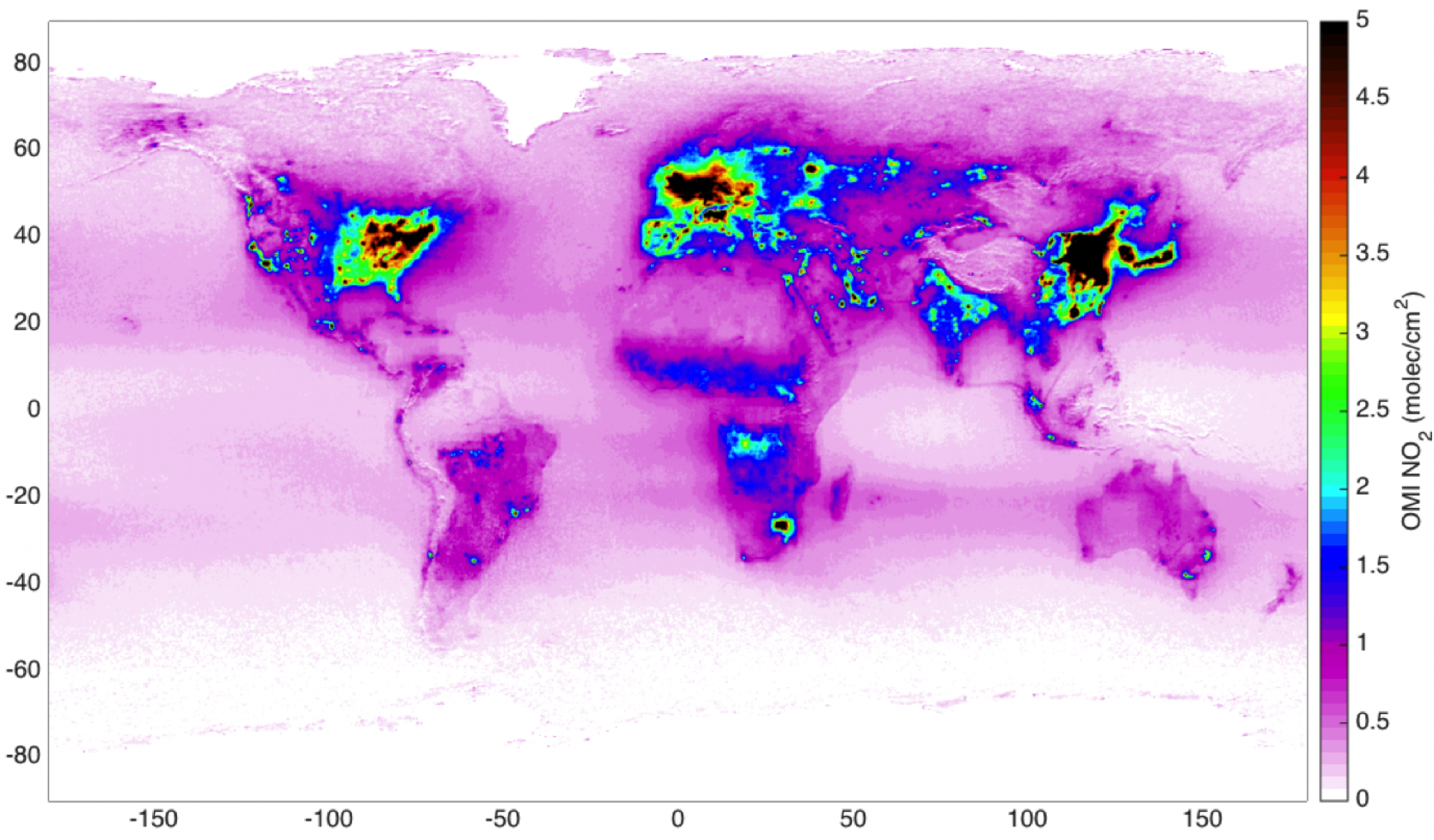Satellite observations show significantly reduced air pollution levels over the major Ukrainian cities, power plants and industrial areas.
Since February 2022, the full-scale war in Ukraine has been strongly affecting society and economy in Ukraine. Satellite observations provide crucial information to objectively monitor and assess the impacts of the war.
We published a new paper last Friday on Scientific Reports which utilizes satellite observations of air pollutants and other relevant parameters from multiple platforms to assess the impacts of the ongoing war on the Ukrainian society. Satellite observations show that the concentrations of nitrogen dioxide (NO2), which is emitted through fossil fuel combustion processes, declined in 2022 over the major Ukrainian cities, power plants and industrial areas by 15–46%.
Such reductions reflect the decrease in population and corresponding emissions from the transport and commercial or residential sectors as well as the decline in industrial production, especially from the metallurgic and chemical industry, which led to a reduction in power demand and corresponding electricity production from power plants. Carbon dioxide (CO2) observations also indicate reductions in fossil fuel combustion, especially in eastern Ukraine, where the largest emission sources are located.
“During peaceful times, reductions in nitrogen dioxide concentrations as those observed here would be considered as a welcome improvement of air quality and human health. In this case, the observed changes tell a different story about the extent of the disruption caused by the war on the Ukrainian society and economy. Also, the reductions in fossil fuel consumption in Ukraine might have been partly offset by an increase elsewhere”, explains senior researcher at the Finnish Meteorological Institute Iolanda Ialongo, who led the work.

Difference of the March-August mean tropospheric NO2 columns between 2022 and 2021 based on S5P/TROPOMI observations. Blue colours indicate reductions observed in 2022. Black dots correspond to the major cities, industrial areas, and power plants. Image: I. Ialongo, FMI.
Exceptional fire patterns near the front line
Satellite imagery and fire detections indicate an anomalous distribution of fires along the front line, which are attributable to shelling or other war-related fires, rather than the typical homogeneously distributed fires related to crop harvesting. Satellite imagery data also show drastic changes over the city of Mariupol, which was attacked during the first three months of the war.
The signal from the hot smokes from the metallurgic industrial facilities in the city disappears from the satellite imagery after March 2022, which suggest an interruption of industrial activities, and, correspondingly, NO2 levels decreased.

Fire detections from Suomi-NPP VIIRS over Ukraine between March and August for the years 2019–2022. Colors correspond to the month number. Several fires were observed north-west of Kyiv during March, when the Russian offensive focused on the area surrounding the Ukrainian capital. Towards the summer, the fires are mostly detected along the front line in the eastern and southern parts of the country, which is in line with the location of the frontline at that time. Image: I. Ialongo, FMI.
The results are based on the NO2 retrievals from the European TROPOMI (TROPOspheric Monitoring Instrument), onboard the Sentinel 5 Precursor satellite, and the CO2 observations from the NASA’s OCO-2 satellite. Also satellite imagery from the Sentinel 2 satellite was analyzed as well as fire detections from the Visible Infrared Imaging Radiometer Suite (VIIRS).
The research was carried on at the Finnish Meteorological Institute together with colleagues from the University of Lviv (Ukraine) and USRA (USA). The Finnish part of the research was supported by the Ministry for Foreign Affairs of Finland via the Interinstitutional Development Cooperation Instrument (ICI), UHMC-FMI Meteorology project and the Research Council of Finland.
The hope is that the results will support authorities in better assessing the effect of the war on the Ukrainian society.
Further information:
Senior researcher Iolanda Ialongo, Finnish Meteorological Institute, iolanda.ialongo@fmi.fi
Scientific article is available on Scientific Reports.
Reference: Ialongo, I., Bun, R., Hakkarainen, J. et al. Satellites capture socioeconomic disruptions during the 2022 full-scale war in Ukraine. Sci Rep 13, 14954 (2023). https://doi.org/10.1038/s41598-023-42118-w
